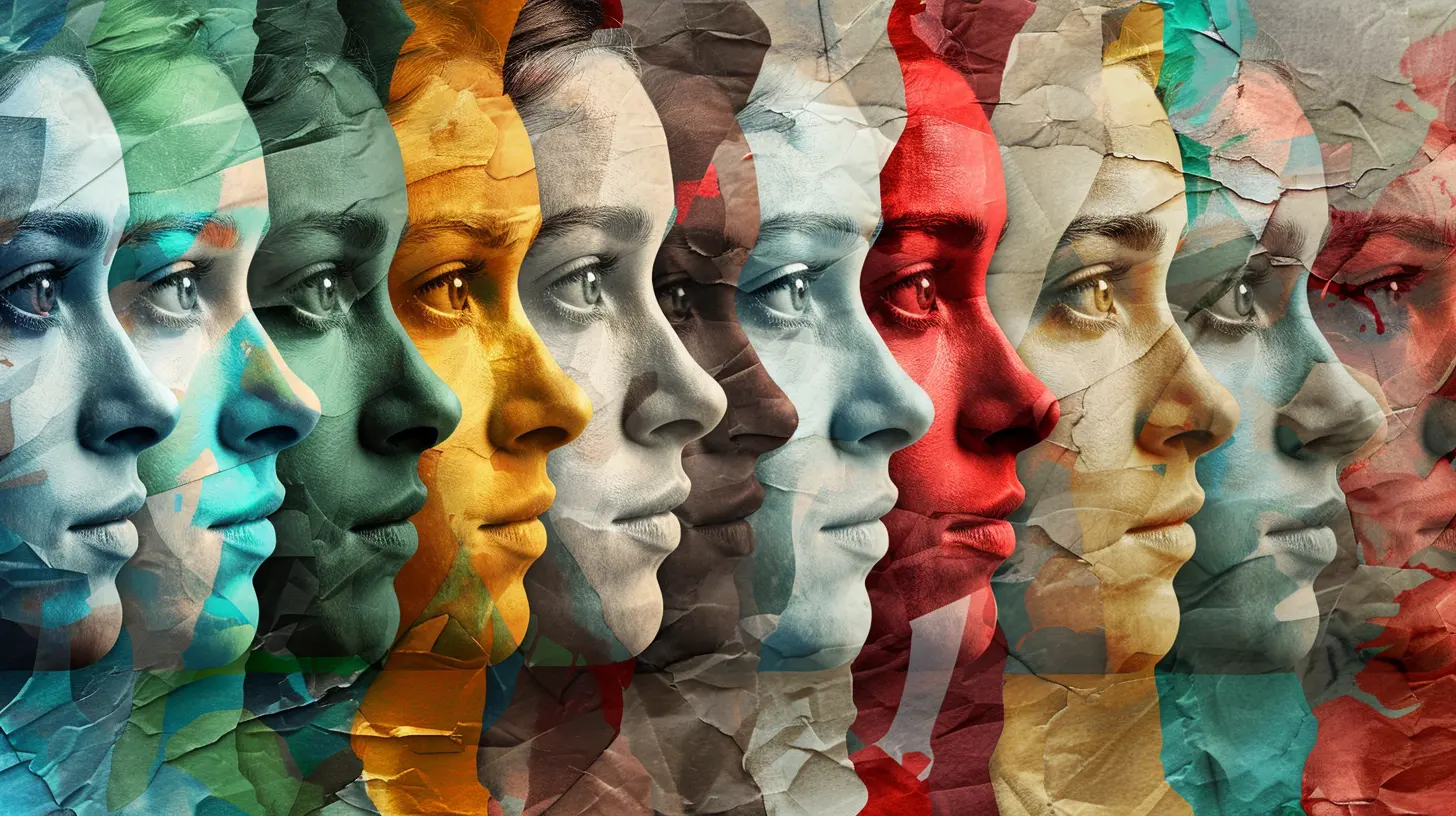The Evolution of Personality Disorder Diagnosis: From Freud to the DSM-5
11 August 2025
Let’s be real—mental health has come a long, long way. If someone had a “personality issue” a century ago, they were more likely to end up in a padded room than in a therapist’s office. Isn’t it wild how our understanding has shifted over time?
In this deep dive, we’re going to peel back the layers of history and psychology to see how personality disorders were viewed in the early days—yep, back when Freud was putting everyone on a couch—and how we got to where we are with the DSM-5.
Whether you’re a psych student, a curious mind, or someone trying to understand this topic better, you’re in the right place. So, grab your coffee, and let’s take a walk down the occasionally wacky, often enlightening road of psychological evolution.
What Is a Personality Disorder, Anyway?
Before we hop in the time machine, let’s make sure we’re on the same page.A personality disorder is basically a type of mental disorder that involves rigid and unhealthy patterns of thinking, feeling, and behaving. These patterns are deeply ingrained and can seriously mess with a person’s relationships, work, and life in general.
Unlike anxiety or depression, personality disorders aren't temporary—they're more like an uphill hike with a backpack full of emotional bricks. They typically show up in adolescence or early adulthood and stick around unless treated.
Alright, now that we’ve got that down… let’s rewind the clock.
Freud’s Era: When Personality Was All About the Unconscious
Let’s start with the man, the myth, the mustached legend—Sigmund Freud. Back in the late 1800s and early 1900s, Freud was laying the groundwork for what would later become modern psychology.Freud didn’t talk about “personality disorders” the way we do today. Instead, he focused on what he called “neuroses” and, of course, those famous defense mechanisms. According to Freud, personality problems came from inner conflicts—usually repressed childhood drama or unresolved Oedipal issues. (Yes, he really went there.)
In his world, the personality was divided into three parts:
- The Id – basic instincts and desires
- The Ego – the rational part
- The Superego – your inner critic and conscience
When these three were out of sync? Bam—problems occurred. Think of it as an internal tug-of-war, and if the ego couldn’t keep the peace between the childish id and the judgmental superego, things got messy.
Freud’s Big Contribution
While his theories were far from perfect and are considered outdated now, Freud gave us a crucial gift: the idea that early experiences and unconscious processes shape personality. He was the spark, and the fire spread.
The Mid-20th Century: Enter Psychoanalytic and Object Relations Theories
As the 20th century rolled on, lots of thinkers added their own spice to Freud’s original recipe.People like Melanie Klein, Karen Horney, and Otto Kernberg started focusing more on relationships—especially those in early childhood—and how they shape our sense of self.
Instead of just fighting with mommy and repressing it, object relations theorists said, “Hey! Maybe it’s not just the conflict—it’s the entire environment that shapes how we form attachments.”
This shift was huge. It moved the field from “What’s wrong inside your brain?” to “What happened to you?” Sound familiar? That language is still being used today.
The Birth of the DSM: The First Attempt to Classify Personality Disorders
The Diagnostic and Statistical Manual of Mental Disorders, or DSM, is like the bible of psychiatric diagnosis. But the early versions? Not exactly comprehensive.DSM-I (1952) and DSM-II (1968)
These were mostly influenced by Freudian thinking and were vague, to put it nicely. Personality disorders were referred to but not really fleshed out. Terms like “sociopathic personality disturbance” were thrown around without much clarity.It was a hot mess in terms of reliability. Every therapist had their own spin on things. You might get diagnosed with something totally different depending on which doctor you saw.
DSM-III (1980): A Turning Point
Here’s where things got real. DSM-III introduced a more structured, symptom-based approach. This version was less about theory and more about defining behaviors. And for personality disorders? It was a milestone.DSM-III listed 11 personality disorders, grouped into three clusters:
- Cluster A: Odd or eccentric (Paranoid, Schizoid, Schizotypal)
- Cluster B: Dramatic or erratic (Borderline, Narcissistic, Antisocial, Histrionic)
- Cluster C: Anxious or fearful (Avoidant, Dependent, Obsessive-Compulsive)
This new structure helped clinicians actually agree on diagnoses. Imagine that!
The Impact
For once, psychiatrists had a common language. This meant better diagnoses, better research, and better treatment plans. DSM-III was the starting point for treating personality disorders as serious mental health conditions, not just quirks or bad behavior.DSM-IV and DSM-IV-TR: Refining the Details
By the time DSM-IV rolled around in 1994 (and its text revision in 2000), psychology had become far more evidence-based. Researchers were now asking, “Are these categories really accurate?” and “Do they overlap too much?”Spoiler alert: Yes, they do.
For example, someone might meet the criteria for both Borderline and Histrionic Personality Disorders. So which is it? Or is it both? This overlap created confusion and raised questions about whether these disorders were truly distinct or just variations on a spectrum.
Still, DSM-IV-T was a solid upgrade. It opened the door to better understanding and more nuanced therapies like Dialectical Behavior Therapy (DBT) for Borderline Personality Disorder.
The DSM-5 (2013): The Latest Chapter in the Story
Now we come to the current gold standard: DSM-5. And while it kept most of the structure from DSM-IV, it made some important shifts.The Categorical vs. Dimensional Debate
One of the biggest issues with diagnosing personality disorders is this: Are we labeling people too rigidly?Let me put it this way—saying someone “has” Borderline Personality Disorder like it’s the flu doesn’t really capture the nuance of human behavior. That’s why the DSM-5 started leaning toward a dimensional model.
Instead of saying, “You either have it or you don’t,” the dimensional model looks at traits on a spectrum. Think of it as a color gradient instead of black and white.
This model focuses on these five personality trait domains:
1. Negative affectivity
2. Detachment
3. Antagonism
4. Disinhibition
5. Psychoticism
Each trait is measured in degrees, not absolutes. It’s more flexible, more accurate, and—frankly—more human.
Alternative Model for Personality Disorders (AMPD)
In DSM-5, the AMPD was added as an optional framework. It hasn’t fully replaced the traditional model (yet), but it’s a promising step forward. It encourages clinicians to look at functioning and traits rather than just ticking boxes off a checklist.So… Where Are We Now?
Personality disorder diagnoses today are much more nuanced than they were in Freud’s day. We’ve got better tools, better language, and way more empathy.But we’re not done evolving.
New research is exploring how genetics, neurobiology, trauma, and environment all play a role. Mental health professionals are leaning into trauma-informed care and looking beyond just the symptoms.
And let’s not forget—we’re also breaking down the stigma. Talking openly about personality disorders isn’t taboo anymore. It’s part of the conversation.
What’s Next?
If DSM-6 ever becomes a thing, we can bet it’ll embrace the dimensional model more fully. It’ll probably dive deeper into neurobiological causes too.But beyond the science, the future of personality disorder diagnosis lies in compassion. Because at the end of the day, these aren’t just labels—they’re people. People struggling with emotions, relationships, and self-understanding.
We’ve come a long, long way from Freud’s couch. And we've still got miles to go.
Final Thoughts
The evolution of personality disorder diagnosis reflects a growing understanding, not just of the human mind, but of humanity itself.From Freud’s theories and psychoanalysis, to the categorical clusters of DSM-III, to the more fluid dimensions of DSM-5, the journey has been one of complexity, controversy, and progress.
And if there’s one thing we’ve learned, it’s that personality—like psychology itself—isn’t fixed. It’s dynamic, layered, and ever-changing.
So, whether you’re wrestling with your own personality traits or supporting someone who is, keep this in mind: Growth is always possible. Awareness is the first step. And the story isn’t over yet.
all images in this post were generated using AI tools
Category:
Personality DisordersAuthor:

Alexandra Butler
Discussion
rate this article
1 comments
Tempra McQuillan
This article offers a compelling overview of the evolution of personality disorder diagnoses, highlighting the shift from Freud's psychoanalytic framework to the DSM-5's more structured criteria. It underscores the importance of understanding historical context in shaping contemporary clinical practices and improving patient care. Great read!
August 18, 2025 at 3:07 PM

Alexandra Butler
Thank you for your thoughtful feedback! I'm glad you found the article insightful and relevant to contemporary clinical practices.


